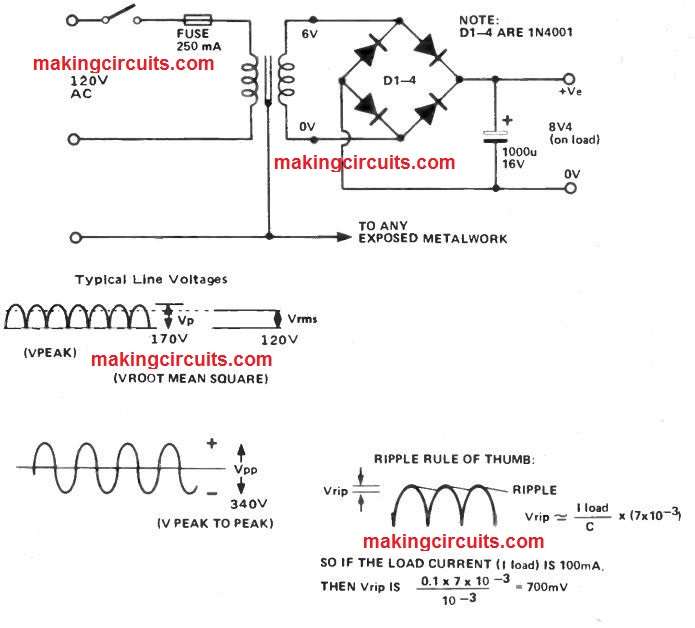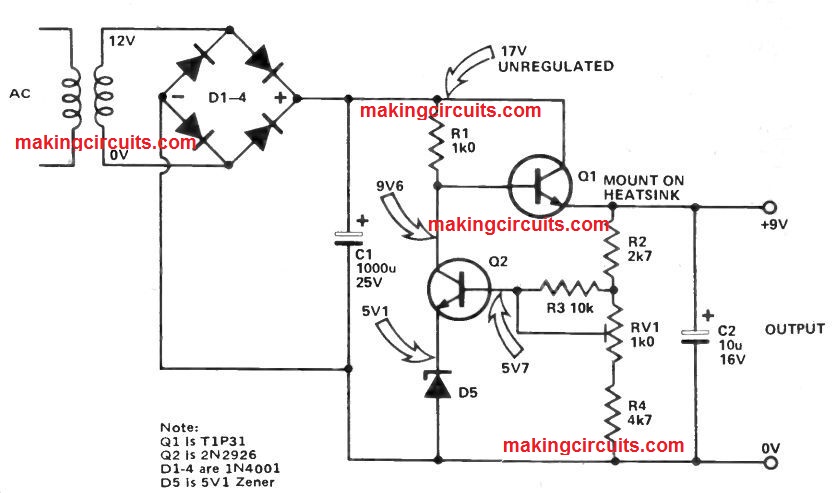In this post we try to understand how basic power supply circuit works and how to design regulated and unregulated power supply circuits.
UNREGULATED POWER SUPPLY
A single rail power supply is displayed in the diagram below. It has three distinct portions, the power transformer, the full wave bridge rectifier and the filter capacitor.

For security, the fuse needs to be set the live wire path to the transformer. The voltages offered are AC voltages measured in Volts RMS. This can be the similar "DC heating" voltage and it is comparable to 0.707Vp.
The output of the transformer is 6V RMS and this also could be the voltage level "on load". Once the transformer is just not loaded this voltage might enhance by around 25%.
The variation amongst the loaded and unloaded output voltage is referred to as the "regulation" of the transformer. Transformers possess power ratings indicated with regards to VA. A 10VA transformer are able to supply 10 watts of power through its secondary output.
The AC voltage through the transformer secondary is full wave rectified through the diode bridge D1 to 4 after which filtered by capacitor C1. Without any load on the power supply the output (DC) voltage will probably be roughly 11V.
However when a resistive load is shown to it, the voltage falls and a ripple voltage shows up, this being a result of the load discharging the capacitor.
REGULATED POWER SUPPLY
Two transistors and a voltage reference enables you to produce a regulated power supply.
Transistor Q1 is employed as the power control element thus needs to be installed on a heat sink. Q2 delivers adverse feedback and thus allows to iron out any alterations at the output caused by varying load conditions or variants in the unregulated rail.
The circuit procedure is as follows. A current passes via Q2 and D5 and so creates a voltage of 5V1 around D5. The base of Q2 is attached to the output with a set of resistors, R2, 3, 4 and RV1.

If the output voltage increases, then more current will pass via Q2. This leads to the voltage at the base of Q1 to drop, which often decreases the voltage at the output.
Hence the output voltage is controlled. RV1 is utilized to create the output voltage to +9V. In case the wiper of RV1 need to unintentionally lift off, then the output voltage might immediately increase to that of the unregulated rail.
To avoid this R3 supplies a long lasting DC path to the base of Q2. Capacitor C2 aids you to enhance the regulation once the load conditions change quickly.
Leave a Reply